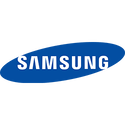
SK hynix Develops LPDDR5T, World's Fastest Mobile DRAM
SK hynix Inc. announced today that it has developed the world's fastest mobile DRAM 'LPDDR5T (Low Power Double Data Rate 5 Turbo)' and provided sample products to customers. The new product, LPDDR5T, operates at a data rate of 9.6 gigabits per second (Gbps), 13% faster than the previous generation LPDDR5X unveiled in November 2022. To highlight the maximum speed the product features, SK hynix added 'Turbo' at the end of the standard name LPDDR5.
LPDDR5T, which operates in the ultra-low voltage range of 1.01 to 1.12 V set by the JEDEC (Joint Electron Device Engineering Council), is a product that not only features utmost speed but ultra-low power consumption. "The company pushed the technology to new limits in just two months after LPDDR5X, mobile DRAM with 8.5 Gbps specification, was introduced to the market in November 2022," SK hynix said. "We will solidify our leadership in the mobile DRAM market by providing products of various storage capacities that meet customers' needs."
LPDDR5T, which operates in the ultra-low voltage range of 1.01 to 1.12 V set by the JEDEC (Joint Electron Device Engineering Council), is a product that not only features utmost speed but ultra-low power consumption. "The company pushed the technology to new limits in just two months after LPDDR5X, mobile DRAM with 8.5 Gbps specification, was introduced to the market in November 2022," SK hynix said. "We will solidify our leadership in the mobile DRAM market by providing products of various storage capacities that meet customers' needs."






































